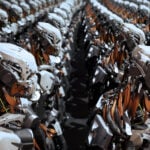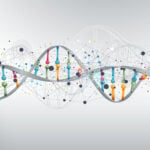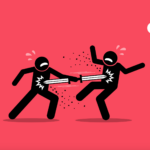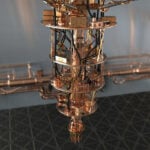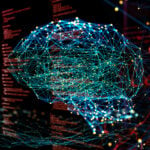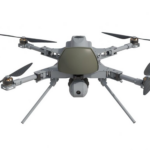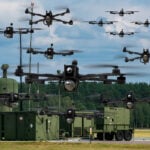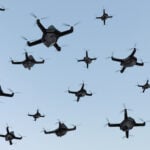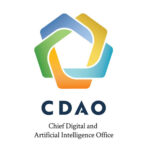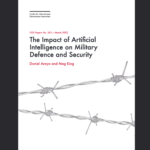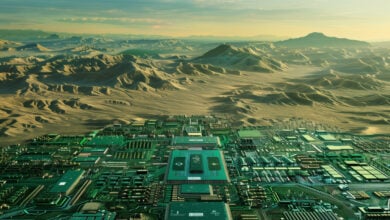Will the Kingdom of Saudi Arabia (KSA) beat Japan to Society 5.0?

Ask most people what they remember from 2016 – if they remember anything at all – and there are usually two big events that float to the front of their minds: Britain voted to leave the European Union and the United States voted Donald Trump into the White House. Together, these two episodes sent shock waves around the world. In the UK, the Brexit referendum was followed by a national decline in mental health. In the US, American college students exhibited levels of stress comparable to PTSD.
Even beyond those borders, Brexit and the Trump election became emblematic of the uncertainty and volatility of our age. They were such unlikely events, so seemingly unpredictable, they had everyone from political analysts to social scientists to farm workers scrambling to make sense of it all.
But, at the same time that much of the world was in a state of reactive sensemaking, two other nations were presenting their views of how they intended to meet the evolving challenges of a shapeshifting global future.
In January 2016, Shinzo Abe announced Japan’s Fifth Science and Technology Basic Plan, a comprehensive strategic framework for the country’s future development. It outlined Japan’s vision and goals for advancing science, technology, and innovation over a five-year period, from 2016 to 2020. But its view stretched far beyond that timeframe. Included in the new policy approach was a radical new conception of social potential, encapsulated in the term Society 5.0: a highly advanced and inclusive society achieved through the integration of cutting-edge technologies like artificial intelligence (AI), the Internet of Things (IoT), big data, and robotics.
Then, in April of the same year, the Kingdom of Saudi Arabia (KSA) launched Vision 2030, a comprehensive and ambitious long-term development plan aimed at diversifying the Saudi economy, reducing its dependence on oil revenue, and promoting various sectors such as technology, tourism, and entertainment. The plan outlined a roadmap for the country’s economic and social transformation over a 15-year period, with the goal of achieving a more diversified, innovative, and vibrant Saudi Arabia by the year 2030.
In the context of a tumultuous year, these long-term views of progressive societal re-engineering stood out as bold, visionary replies to a series of increasingly unavoidable conclusions:
- The world is becoming more complex at an accelerating rate and will only continue to do so – there’s no going back to a simpler time.
- That complexity is creating ‘wicked problems’: multi-dimensional, constantly evolving problems with multiple causes, multiple symptoms and multiple solutions, affecting multiple stakeholders.
- Solving ‘wicked problems’ requires integrative thinking – uniting, for example, the individual and the collective, tradition and future, cyber and physical, nation state and global village.
But that is not where the similarities between these two visions end. Though initially they were pursued for very different reasons, the Fifth Science and Technology Basic Plan (developed further in the Sixth Science and Technology Basic Plan) and Vision 2030 are united by their focus on building technologically-enabled ecosystems that support the healthy evolution of industry, civic society, and private domains. These principles were first, and most explicitly, mapped out in Japan’s concept of Society 5.0, and they are common to both nations’ strategies for a prosperous future, but it appears that seven years down the line – halfway to 2030 – it may be KSA that first brings Society 5.0 to life.
A story of transformation
It is not surprising that a concept as advanced and audacious as Society 5.0 emerged from Japan. When it was published, it reflected, some would say depended on, Japan’s rich history of technological innovation and its ability to adapt to the changing landscape of the digital age.
Japan has the highest economic complexity of any country on the planet, and has maintained the Number One position in the Economic Complexity Index (ECI) for 21 consecutive years. The ECI is often used as a tool to understand a country’s economic structure and its potential for growth and development, based on its export capabilities. Countries with a higher ECI are considered to have more diversified and complex economies, which can be advantageous for long-term economic growth.
Japan’s unbroken reign at the top of the world’s economic complexity leaderboard is thanks largely to the diversity and sophistication of its exports: many different products that require advanced knowledge, technology, and skills to produce. And it was this capability that Japan was leveraging when it came up with Society 5.0, an evolutionary leap from Society 1.0 (based on hunting), Society 2.0 (a social and economic system based on agriculture and trade of goods), Society 3.0 (defined by industrialization), and Society 4.0 (the information society found in most developed countries today). This was a nation that had the know-how and track record to deliver the model of “A human-centered society that balances economic advancement with the resolution of social problems by a system that highly integrates cyberspace and physical space.” From most other countries this would have sounded like a fantastical pipe dream – all hope and aspiration, but with little substance.
Until fairly recently, many would have counted Saudi Arabia among those countries. Less than a hundred years ago it still had an agrarian economy with traditional trade and limited infrastructure. In the Japanese model, this was Society 2.0. But, the oil boom, which began with the first commercial oil discovery in 1938, led to rapid industrialization and urbanization (Society 3.0). Saudi Arabia’s economy became heavily dependent on oil exports, bringing substantial wealth but also vulnerability to oil price fluctuations. Whereas Japan’s primary motivation for transformation sprung from the challenges associated with a rapidly ageing population, KSA was faced with the unavoidable truth that the non-renewable natural resource upon which its economy was based would one day run out. And, in all likelihood, the world would stop consuming it before then, leading to a total market collapse. Vision 2030 was designed to change this by reducing the country’s reliance on oil, promoting other sectors like technology and tourism, and fostering a more diversified and sustainable economy for the future.
Society 5.0 and Vision 2030 were born from very different needs and challenges experienced by societies of very different levels of economic and technical maturity. Yet there are remarkable similarities between the two frameworks.
Both Society 5.0 and Vision 2030 share a focus on reducing dependency on a single industry or revenue source. Society 5.0 seeks to advance Japan’s economy by integrating cutting-edge technologies into various sectors, while Vision 2030 aims to diversify Saudi Arabia’s economy away from oil through investments in new industries.
Both initiatives emphasize the importance of advanced technologies such as AI, the Internet of Things, and digitalization in driving economic growth and improving the quality of life for citizens. This shared emphasis on technology-enabled improvements in social and private wellbeing in both countries extends to key domains such as healthcare, education, and overall living standards.
Both concepts recognize the significance of sustainable practices and addressing environmental challenges. Vision 2030 specifically names growth in the contribution of renewables to the national energy mix and a more competitive energy market as focal areas, while sponsoring efforts to reduce greenhouse gas emissions. In this pursuit, and execution of their overall development agendas, both Japan and Saudi Arabia are prioritizing international collaboration and driving foreign investment to achieve their respective goals.
Finally, both visions recognize the importance of ethical and responsible use of technology. In Japan, Society 5.0 was redefined in 2021 as “a sustainable and resilient society that protects the safety and security of the people and one that realizes the well-being of individuals.” In Vision 2030, where strategic objectives include developing the digital economy and privatizing various state-owned assets and companies to stimulate economic growth, citizen safety is paramount. It’s perhaps unnecessary to point out that cybersecurity and cyber-kinetic security are profoundly important here, so fundamental are these disciplines to the type of technology-augmented society proposed in Society 5.0 and Vision 2030.
Japan has made significant progress in tech research and development since 2016, and has successfully deployed major projects like Michibiki, a “quasi zenith” global navigation satellite system. Tokyo’s space policy committee recently announced its intention to expand the Michibiki network from 4 satellites to 11, which would make it possible to position any user in Japan to within centimeters of their location. This level of accuracy goes well beyond standard GPS capability, and will be crucial to the effective deployment of emerging technologies like self-driving cars and autonomous drones, key components of smart cities and other Society 5.0 ecosystems.
But it is in Saudi Arabia that we see perhaps the most tangible manifestation of the physical world Society 5.0 imagines. In paradigm-shifting projects like NEOM, and its sub-projects THE LINE, Sindalah, Trojena and Oxagon, KSA is moving rapidly towards realizing the amalgamation of nature and human-centric digital environments.
Building the future
Situated along the Red Sea coast in the northwest corner of Saudi Arabia, and covering an area roughly the size of Belgium, NEOM is envisioned as a cutting-edge, technologically advanced, and environmentally sustainable model for successful societies of the future. The name “NEOM” is a portmanteau, taking “Neo” from the Greek word for “new”, and “M” from ‘Mustaqbal’, an Arabic word meaning “future”. Already home to 2,800 staff from 86 countries, NEOM was launched in 2017 by Crown Prince and Prime Minister, His Royal Highness Prince Mohammed bin Salman bin Abdulaziz, colloquially known as “MBS”.
Beyond cementing KSA’s place at the vanguard of human development, NEOM’s primary objective is to diversify the Saudi Arabian economy by creating a hub for various industries, including technology, tourism, and entertainment. The project is fully powered by renewable energy sources, utilizes sustainable transportation systems, and employs eco-friendly practices to minimize its environmental impact.
Reflecting its appetite for foreign investment and desire to build a pan-national population, NEOM will be a semi-independent zone with its own laws and semi-governmental authority. In a country sometimes accused of authoritarianism, this is a bold commitment to more liberal governance and deregulation.
As progressive as these frameworks may be, few people would call them exciting. That kind of language is reserved for some of the other developments in NEOM, such as Sindahla – a luxury island getaway and likely the first of NEOM’s projects to come online – or Trojena, a unique mountain lifestyle location that will see novel architectural installations blended with natural landscapes to create high-end living and skiing facilities.
But it’s two of NEOM’s other leading-edge developments that are capturing most of the outside world’s attention.
Oxagon is the reimagining of an industrial hub, powered by 100% renewable energy and built on economic principles of circularity. Like Society 5.0, its DNA emerges from Industry 4.0, also known as the Fourth Industrial Revolution, a transformative concept that represents the integration of digital technologies, automation, data analytics, and the Internet of Things (IoT) into industrial processes. Industry 4.0 revolutionizes manufacturing and production by creating “smart factories” where machines, systems, and processes are interconnected and communicate with each other. Through the collection and analysis of vast amounts of data, the application of this approach at Oxagon will enable real-time decision-making, predictive maintenance, and increased efficiency. This shift will not only enhance productivity but also offer opportunities for customization, sustainability, and innovation across industries, marking a fundamental change in how products are made and how businesses operate.
Oxagon includes plans to create the Port of NEOM, a next-generation smart port to join the ranks of Rotterdam and Singapore, where cutting-edge technologies like Digital Twins and full IoT enablement deliver increased efficiencies. Port of NEOM is planned to run a proprietary integrated digital supply chain system that orchestrates port, logistics and rail delivery operations to make the port a highly-functioning connective node between NEOM and the outside world.
Finally, and perhaps most aspirational, is THE LINE. Still mostly in the concept phase, THE LINE aims to redefine urban living. You’ve probably heard that kind of promise before because many developers make that claim, but never before has anyone achieved what THE LINE hopes to achieve at the scale it hopes to achieve it.
This would be a linear city, 170 kms long, but only 200 meters wide, stretching from the mountainous regions of NEOM to the Red Sea and housing up to nine million people. 95% of public space would be reserved for nature. 100% of energy would be green. There would be no cars and no pollution. Everything you need would be within a 5-minute walk and a high-speed rail would carry you from one end of the city to the other in 20 minutes. The city itself would incorporate nature yet be totally smart, leveraging cutting-edge technologies, such as AI, robotics, and biotechnology, to create a city ecosystem that enhances the quality of life for residents and visitors.
All sound to good to be true? You wouldn’t be the first to say so. The plans for THE LINE and NEOM more widely are so ambitious that it’s easy to write them off as fantasy and idealism. And, frankly, it would be politically inconvenient for many parts of the world if KSA managed to pull this off, so it’s not surprising when negative narratives tend to lead to public opinion. A promotional video for the NEOM project starts with the affirmation, “NEOM is real”, undoubtedly in response to a sentiment of disbelief in a) NEOM’s viability; and b) KSA’s ability to make it happen.
If you’re familiar with my outlook on the world, you’ll know that I prefer to take a pragmatic view of things. I’m not usually one to be drawn into fanciful ideas or fluffy dreams, nor am I easily won over by a smooth piece of marketing. But NEOM is real. Construction is already under way. Investment – both foreign and domestic – is flowing in. No one expects this to be delivered overnight. The project is planned to be developed in multiple phases and the full realization of NEOM’s vision is expected to occur over several decades.
The outcome might very well be the boldest and most forward-looking vision for urban development, economic diversification, and technological innovation the world has seen. It would position Saudi Arabia as a global leader in various industries and provide new opportunities for both Saudi citizens and international investors. But more than that, it would be a living showcase for what is possible in building novel societies that integrate people, nature and technology. Possibly for the first time, we would see Society 5.0 at scale, and that is an exciting prospect for humanity in general.
In the early 2000s I was a partner in Knowledge Age: a multi-disciplinary consultancy firm assimilating strategy, financial and economic analysis, policy, education and a number of telecommunications and information technology disciplines in order to help emerging markets develop knowledge-based economies. Our job, essentially, was to accelerate the progress to Society 4.0. We worked with a number of governments on country-level digital strategy and digital transformation.
As in Saudi Arabia today, the primary objective was diversification. At the time, the desire of some of our clients was to diversify away from reliance on property, tourism or oil towards more knowledge-based services, IT outsourcing, ecommerce. My experience during that time left a strong impression on me. In most countries, the transformation strategy is planned many decades in advance. And the execution takes even longer, often due to corruption, government changes, and all manner of delays.
In the UAE, however, things were different. Throughout my stay there, and then later in Qatar, I often heard proclamations along the lines of “our aim is to achieve the impossible”. And most of the time, they did. They built some of the most impressive global infrastructure projects I’ve seen while implementing complex and cutting-edge technologies.
And I see the same in KSA today. It is true that they started some mega-projects in the past that were never finished. But I believe that was an issue of motivation rather than capability, capacity or resource – it was primarily a “why”, not a “how”, issue. Previously it may have been more about competing with their neighbours, but today it is about survival.
With the unveiling of Vision 2030 in 2016, MBS declared his country had about 20 years to change the whole of society because the commodity upon which that society’s quality of life was built – oil – would keep losing its relevance. From that vantage point, Vision 2030 was not, and is not, a vanity project or an expensive daydream. It is a strategy for sustainability, in the truest and most radical sense of that word. I can feel that difference in KSA. Super ambitious NEOM and THE LINE are actually happening. Foreign companies are genuinely getting involved. Things are changing. This time, they might truly “achieve the impossible”.
For 30+ years, I've been committed to protecting people, businesses, and the environment from the physical harm caused by cyber-kinetic threats, blending cybersecurity strategies and resilience and safety measures. Lately, my worries have grown due to the rapid, complex advancements in Artificial Intelligence (AI). Having observed AI's progression for two decades and penned a book on its future, I see it as a unique and escalating threat, especially when applied to military systems, disinformation, or integrated into critical infrastructure like 5G networks or smart grids. More about me, and about Defence.AI.












